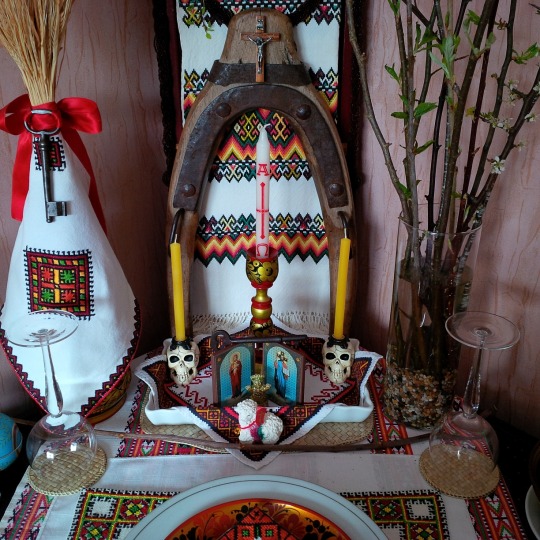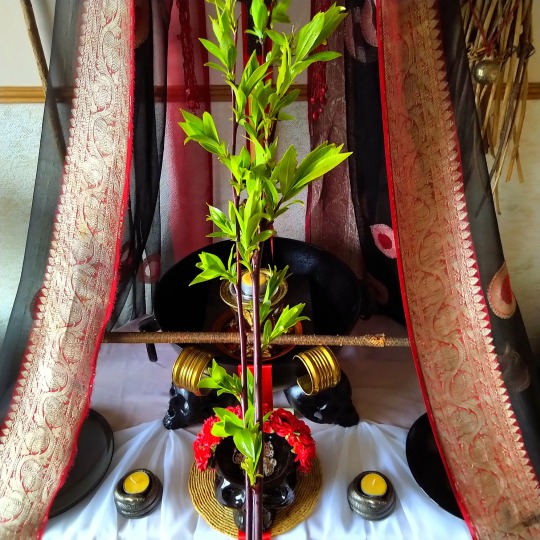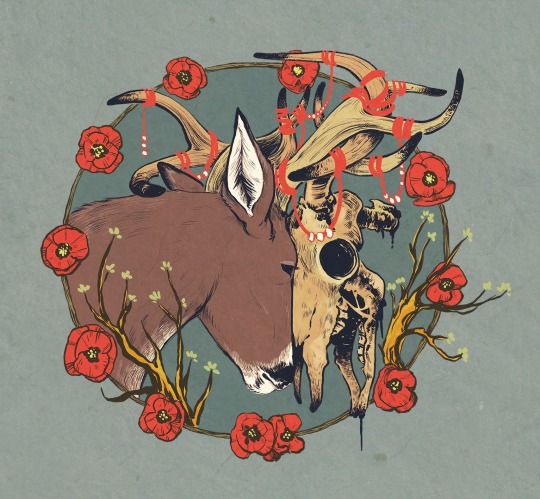Text


The Fettercairn Jewel
From my visit to The National Museum yesterday,, this fascinating wee pendant is shrouded in mystery, this is what the museum says about it.
The Fettercairn Jewel is an exceptionally rare Renaissance gold pendant locket. Set with a large almandine garnet, it features an elaborate scene in enamel on the back. The jewel is oval, with a fastening at the top to hold a gold ring, and, at the bottom, a smaller ring, that was originally a catch to hold the case shut. The case opens and would probably have contained a miniature portrait on vellum or ivory or some other personal memento. It would have been worn as a pendant on a chain or pinned to clothing, and it probably had a pearl or precious stone hanging beneath it.
The front of the Fettercairn Jewel, set with a large garnet, but I prefer the back, whichl is decorated with detailed enameled imagery.
The Fettercairn Jewel is one of a very small number of Renaissance jewels to have survived in the British Isles. Jewellery from such an early date has a very low survival rate, due to the historic recycling of precious stones and materials. This makes the survival of the Fettercairn Jewel remarkable.
Its Scottish provenance, and its potential relationship with other known jewels made for Scottish patrons, raise the possibility that the Fettercairn Jewel was made in Scotland or for a 16th-century Scottish patron. Our initial historical research is concentrating on these lines of enquiry.
The Fettercairn Jewel holds the potential to expand significantly our knowledge of the Scottish Renaissance, about the way in which a visually literate society communicated complex messages through objects, and to learn more about the quality and ambitions of 16th-century craftsmanship.
The garnet, on the front was reputed to have medicinal and healing properties.
On the reverse of the pendant the scene centres on a figure of Mercury, with his caduceus, or staff, resting on his outstretched right arm. He is wearing a winged helmet and classical armour, and holding something in his raised left hand.
To the right of Mercury sits a white dog looking upwards, possibly a symbol of fidelity. A vase of flowers stands to his left and more flowers appear elsewhere on the ground. The carefully delineated flowers, including cornflowers, wild roses, violets and marguerites, are all identifiable and many had specific symbolic meanings.
On the horizon are two groups of buildings and a large tree. On the buildings to the left sits a green bird resembling a parrot with its distinctive hooked beak, and on the right a smaller white bird. Above Mercury’s head flies another bird and two butterflies.
The dog, birds and flowers are not part of the usual iconography associated with Mercury, which suggests that the imagery has been designed with a particular meaning and patron in mind. Jewels of this sort often contained complex messages; could the animals and flowers have a heraldic association with the original owner of the Jewel? Is some more complex story hidden in its imagery? So far the Fettercairn Jewel retains its mystery.
Mercury was one of the most popular gods in Renaissance imagery. He was specifically associated at this time as the god of messengers and became closely associated with the officers of arms (the royal heralds) in 16th-century Scotland. An image from the Seton Armorial of c.1591 casts Lyon King of Arms, the king’s personal representative, as Mercury. This could suggest that the Fettercairn Jewel was crafted around the same time, and may indicate a connection to the Scottish court.
We are also trying to establish why the Fettercairn Jewel was made. One possibility links it to the extensive practice of royal court and noble household gift-giving: during the Scottish Renaissance, the royal family gave generous gifts of jewellery to courtiers and ambassadors, a practice common in other European courts of the period.
Alternatively, the Jewel may have been conceived as a token for a beloved family member or spouse. Jewels containing miniature portraits were often exchanged as keepsakes between loved ones, and would often be worn close to the heart.
The pendant came into the National Museums Scotland collection through an auction of over 400 works of art and artefacts from the private collection of the Forbes family, whose home was Fettercairn House in Aberdeenshire. The Forbes of Pitsligo descend from Sir William Forbes, brother of Alexander Forbes, first Lord Forbes. Both branches were prominent elite families in the sixteenth century. The first Lord Forbes married the granddaughter of King Robert II of Scotland and daughter of Douglas, Earl of Angus.
National Museums Scotland is investigating potential links between the Jewel and the Scottish royal court, and the possibility of its links to the Darnley Jewel, now in the Royal Collection. The Darnley Jewel was probably commissioned during the 1570s by Lady Margaret Douglas, Countess of Lennox, as a memorial for her husband Matthew Stewart, earl of Lennox and Regent of Scotland, and was later owned by both Horace Walpole and Queen Victoria. The Fettercairn Jewel shows similarities of design and technique with the Darnley Jewel, and their shared Scottish provenance merits further investigation.
The Fettercairn Jewel is currently on display in the Kingdom of the Scots gallery, near to the Penicuik Jewels, which are associated with Mary, Queen of Scots.
52 notes
·
View notes
Text
Palm or Willow Sunday
The final Holy Week before Easter, services on Palm or Willow Sunday commemorate the triumphant entry of Jesus into Jerusalem. In Ukraine, obtaining palms for these services was difficult and expensive. In place of palms, pussy willow branches, which early in spring showed signs of life and its attendant symbolism, were blessed at services on that Sunday and distributed to the congregation, the same as they are today.
An old custom still preserved today, Boze Rany [God’s Wounds], imitates the scourging of Christ. After Palm Sunday services, Ukrainians gently tap each other with the blessed pussy willows, and say one of the following or other similar phrases:
lozah bye, ne ya byu; vid neeni za tyzhden bude velikden
[the willow hits, not i; a week from now will be easter]
bud velyki yak verba, zdorovi yak voda, bohati yak zemlia
[be as big as the willow, healthy as water, rich as the earth]
This gently tapping with the willow branch showed wishes for good health, happiness, and wealth. The willow, which in ancient times was honored because it first showed signs of growth in spring, was a symbol also that the people should receive the life giving strength of spring. In Ukraine years ago, these blessed pussy willows were used to drive the cattle to pasture for the first time, and then the father or oldest brother would thrust the twig into the ground for good luck. If the willow grew, it foretold of good things - the young girls would marry and the young men would be strong and healthy. Even today many people will root the pussy willows received on Palm Sunday to plant in their gardens.
In the old days as well as now, the blessed willows are often put above a holy picture at home, and the old willow branches are taken down and burned.
* Adapted from ’Ukrainian Easter’ by Mary Ann Woloch Vaughn
33 notes
·
View notes
Text
Holy Week


Holy Week at our ancestral corner altar.
This particular set-up’s constructed by Lazarus Saturday (the day preceding Palm Sunday) and stays with us until the end of harvest when it’s deconstructed to provide space for winter saint venerations and small seasonal displays.
see also: #altar, #ancestor, #holy week
36 notes
·
View notes
Photo

The Fool. Art by Megan Ellis, from The Botanicals & Animals Tarot.
(Final version.)
29 notes
·
View notes
Video
youtube
Joan Osborne: One of Us
if god had a face what would it look like?
and would you want to see
if seeing meant that you would have to believe
in things like heaven and in jesus and the saints
and all the prophets?
see also: #music
3 notes
·
View notes
Text
Verbna Nedilya [Willow Sunday]

Lozah bye, ne ya byu; vid neeni za tyzhden bude Velikden. 🌿
[The willow hits, not I; a week from now will be Easter.]
Attn: @pannazmiya [🌿], @pagan-stitches [🌿], @greencheekconure27 [🌿], and @vyvilha [🌿]. One last [🌿] to anyone else who runs on old calendar time, too. May you all be as big as the willow, healthy as water, and rich as the earth. ❤️
see also: #palm sunday, #willow
15 notes
·
View notes
Photo





Today is Kvitna/Verbna Nedilya (Blooming/Willow Sunday, i.e. Palm Sunday).
After the pussy willow branches have been blessed in church, people symbolically tap friends, family and passers-by with the branches for strength, happiness and health.
Не я б'ю — верба б'є {i do not tap – it is the willow that taps}
За тиждень — Великдень {easter comes in one week}
Будь дужий, як вода {be strong as the water}
А багатий, як земля {and rich as the earth}
Here are some curious traditions connected with this holy day: the catkins were swallowed as a precaution against fever and sore throats. They were also mixed into kasha (porridge) in the belief that all the willow’s spring potential and energy would pass into the person.
After the blessed willow is brought home, the branches are placed behind the icons hanging on the walls, to keep away unclean, evil spirits). The branches are also planted in the garden. If the willow takes, the young folks of the family will marry and be healthy. They were also carried around the home, barn and beehives to ensure fertility of the animals and a good yield of honey. Water wells were surrounded by willows to protect them from evil powers, and to ensure that the water remained pure and strength-giving.
The previous year’s willow branches were used to light the oven for baking paska and babka (Easter breads). They cannot be thrown into the trash, but must be burnt. In many localities, blessed willow branches were placed into the caskets of the dead.
The verba’s branches and roots represent the ancestors and the family tree. It was also believed that the willow is the sky holding up the sun. Because it grows so quickly, it was believed to have magical properties. Thus willow pieces were placed in the water in which a pregnant woman was bathed. – Euromaidan Press
200 notes
·
View notes
Text

Shadow Spinning ~ colored pencil ~ Rork Maiellano
42 notes
·
View notes
Photo

Christ’s Entry into Jerusalem. 15th century.
Credit line: Gift of Felix M. Warburg and his family, 1941
https://www.metmuseum.org/art/collection/search/392941
137 notes
·
View notes
Text
Overture
youtube
Jesus Christ Superstar: Overture
To conquer death you only have to die.
see also: #jesus christ superstar, #music
15 notes
·
View notes
Text
A Welcomed Place

As our Lord entered the holy city, the Hebrew children professed the resurrection of life. Holding palm branches, they cried out, “Hosanna in the highest!” – Antiphon 1: Procession for Palm Sunday
My ancestors’ holy days are my holy days. I reinterpret and redefine to create personal meaning so my connection to them is genuine, but reflective of my own beliefs. Even though Jesus Christ isn’t my savior he has a welcomed place at the resurrective god table I waitress.
see also: #altar, #palm sunday
53 notes
·
View notes
Text
I was going to write a big blurb about the upcoming week but, to be honest, if you can’t see the resurrection rites of a sacrificial god-king beneath the Orthodox Christian veneer of Holy Week you just aren’t going to see it, and no amount of explaining’ll change that.
Lent, Holy Week, and Easter are how I prepare for and celebrate the resurrection of the land, and how I venerate and welcome the new sacrificial god-king of the year. Despite appearances, I don’t consider these rites to be specifically Christian or pagan; they’re 100% Dirty.
#sorry tumblr but folk magic / witchcraft definitely includes christian imagery and customs#since they were the beliefs and traditions of ancestors#and folk magic / witchcraft is inherently an ancestral practice#(i hate that this conversation has to be had every fucking year)#diary
82 notes
·
View notes



